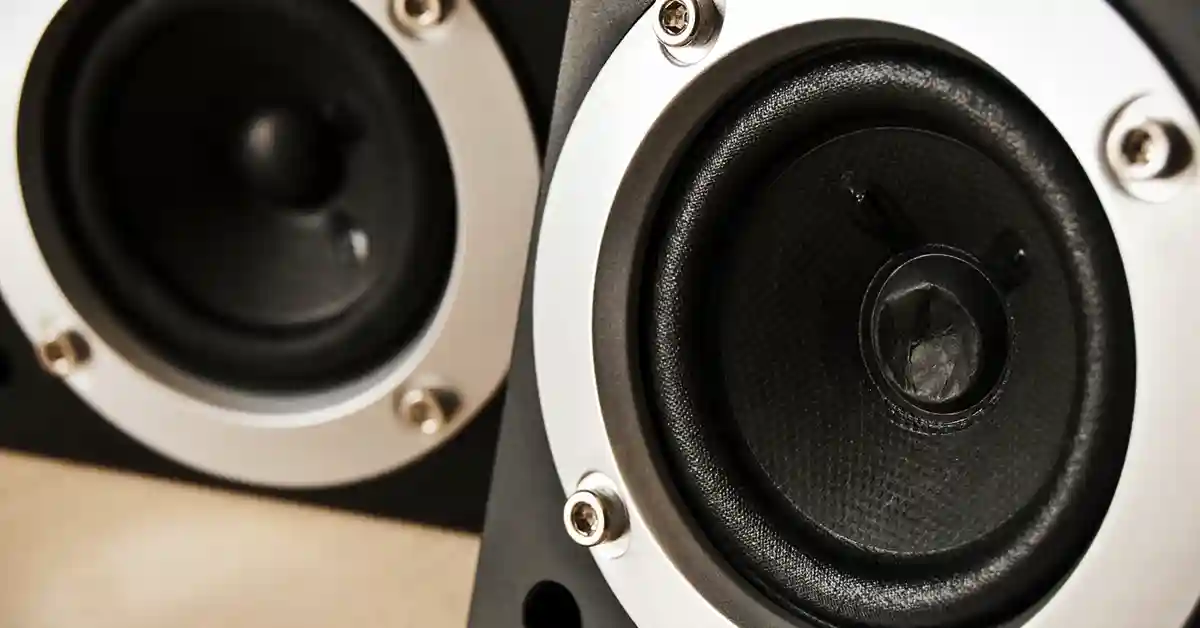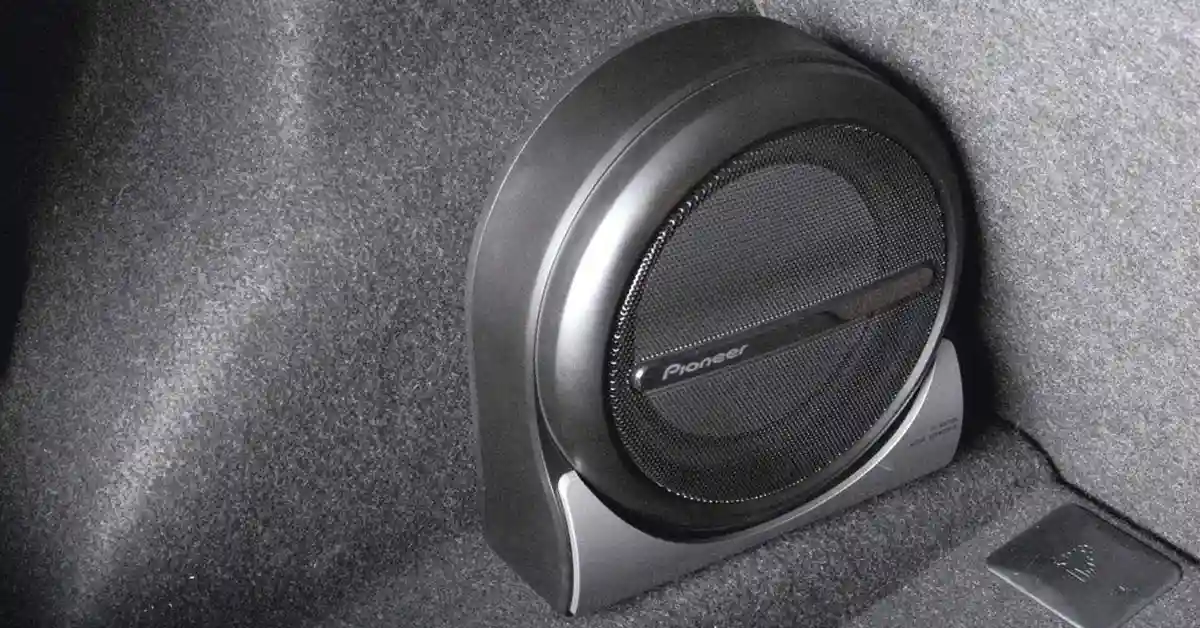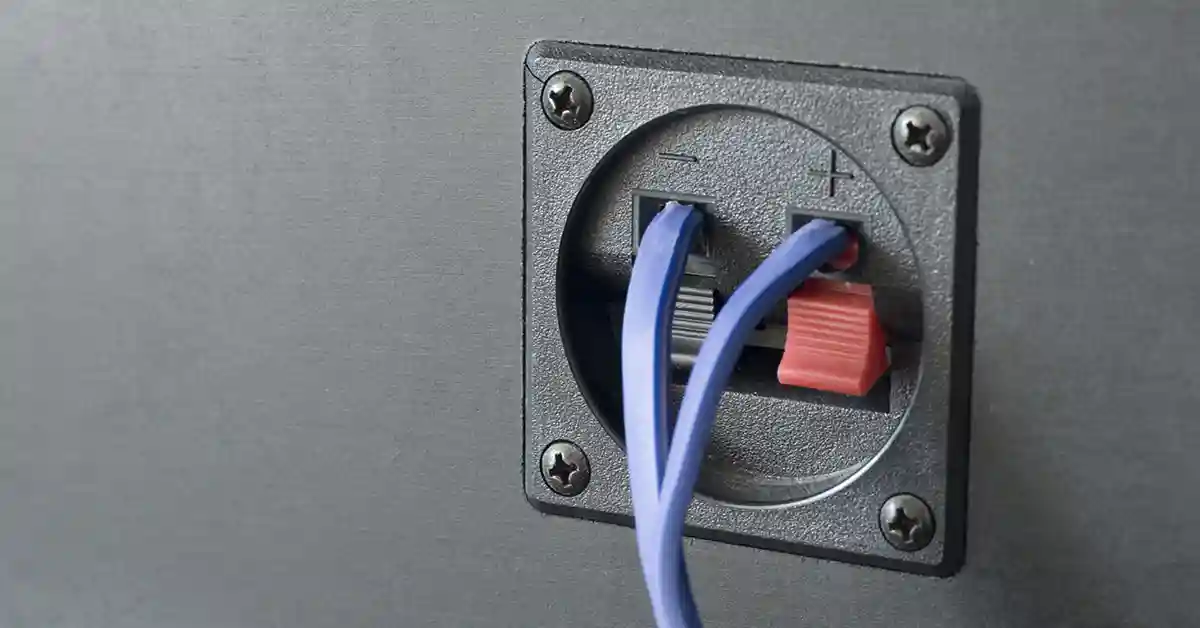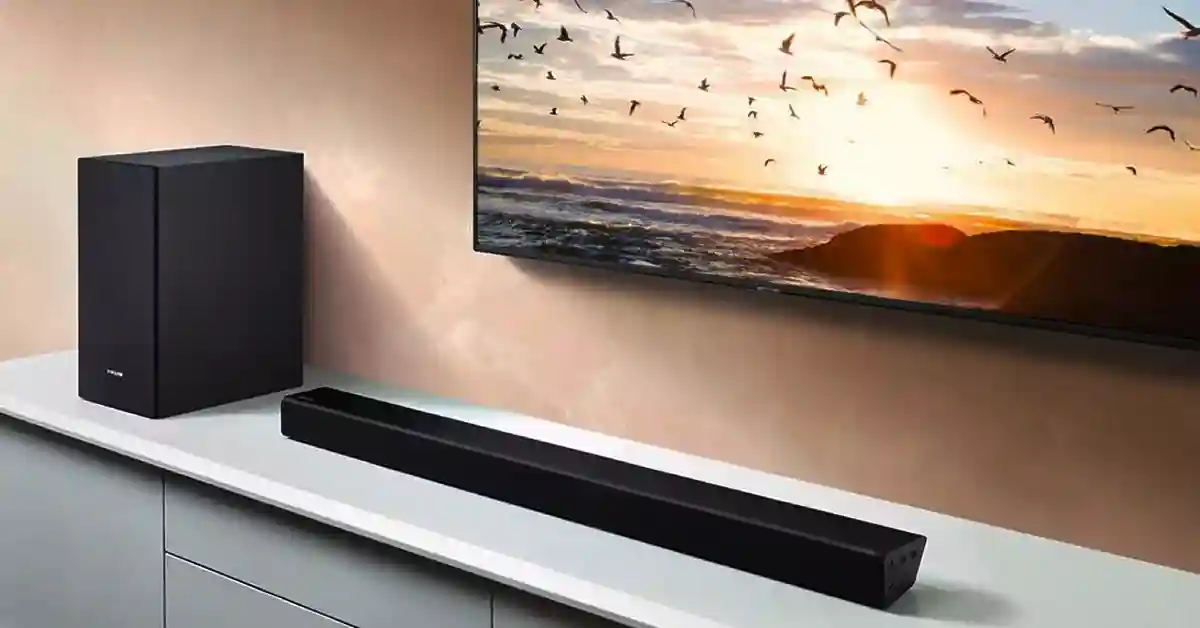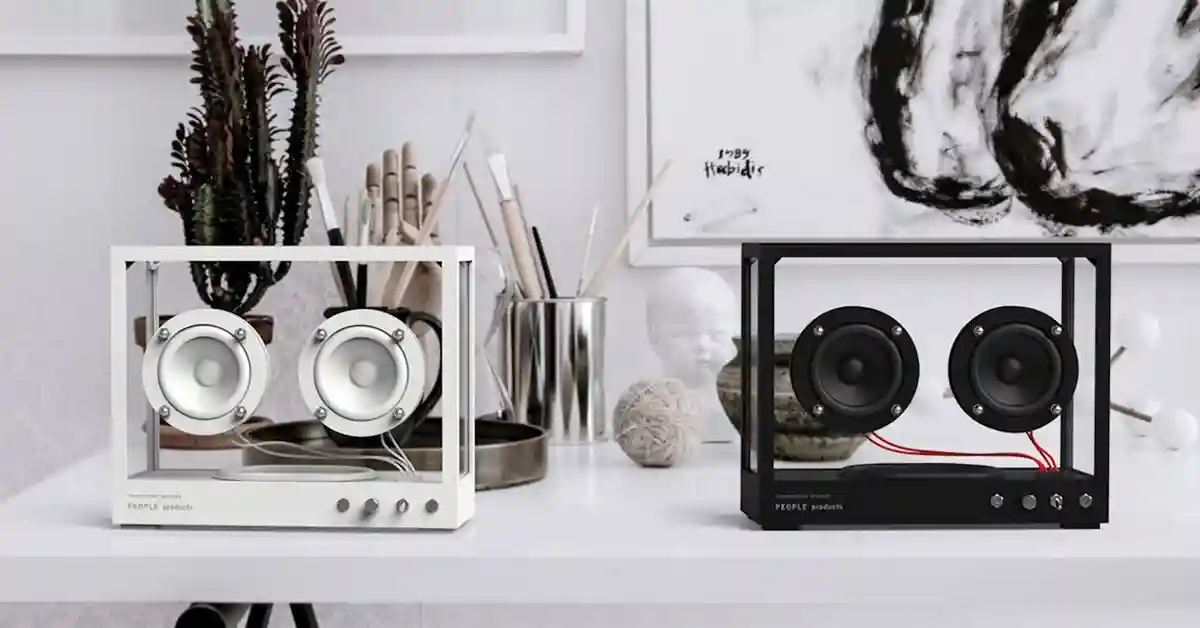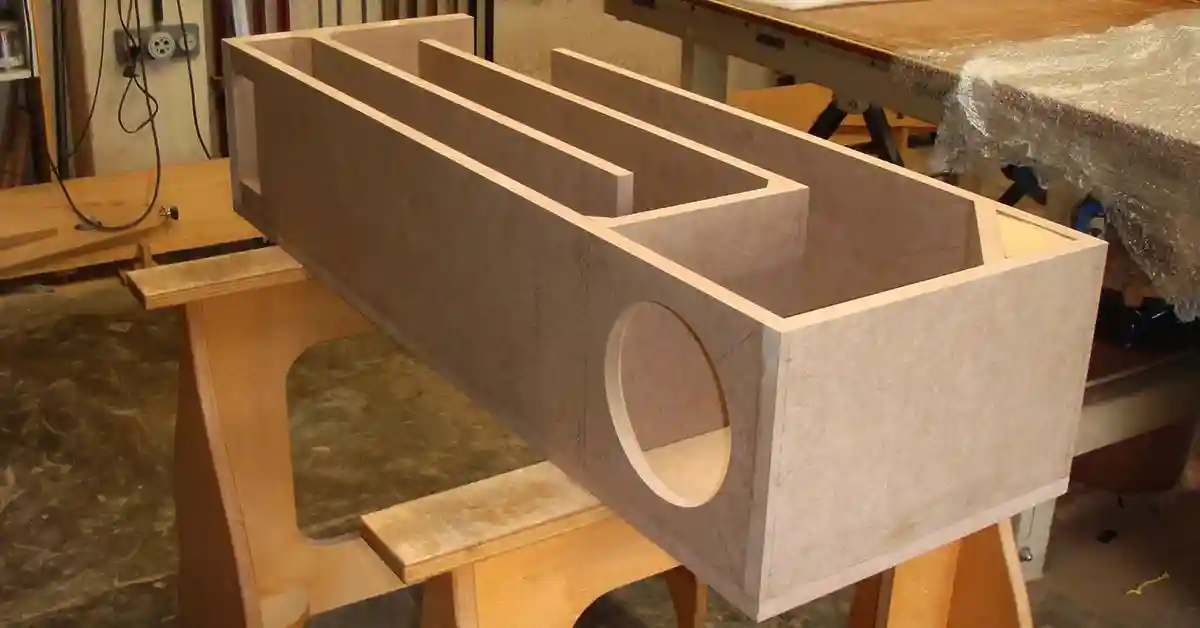How To Test Speakers
Testing speaker connections is needed when your speakers are acting up, or when you've bought a new pair and they're not working properly.
If you're having troubles with your audio settings, need to conduct a Zoom test meeting, or are trying to figure out if your speakers have blown - a simple speaker test can be incredibly insightful. Speakers can be tested in a range of ways, including:
- Using a 9-volt, AA or AAA battery - or, a multimeter.
- Using high-quality audio to test dynamic range and frequency response.
- Manual checks to examine speaker components.
- Various software checks if using a computer.
Either way, we'll go into detail on what you'll need, how to test your speakers thoroughly, and, what to look out for along the way.
How To Test Speaker Wires And Connections
Speaker wires and connections can easily be examined using a 9-volt battery, a multimeter, or using manual inspection.
Always ensure that your testing is extensive, as overlooking certain parts could mean that the faulty component is missed. This could lead to confusion in your diagnosis, especially if your speakers are not working properly or are completely non-functional.
How To Test A Speaker With A Battery
Speakers can be easily tested with a common household battery. Considered one of the best speakers tests because of its accessibility and response time, this battery process can tell you if your speaker is responsive in a matter of seconds.
To test your speakers using a battery, you'll need the following:
- An AAA, AA, or 9-volt battery - or,
- A 9-volt battery connector cap (also called a 9V battery adapter).
- Two pieces of speaker wire.
- Tape to connect speaker wire to battery terminals.
- Pliers to strip or cut any wire.
- Any speakers that need testing.
It's highly advised to use a battery that's as new as possible, as it will carry the highest voltage which will increase the accuracy of your speaker evaluations.
Also, if you can, try and use a 9-volt battery. These carry around 9 volts of electricity, while AA batteries produce around 1.5V and AAA around 1.2V. If you're concerned with quality or have a few speakers that you want to test, it's recommended to choose one with more voltage.
When you do carry out your test, only touch the battery to your speaker's terminals momentarily. Exposure to current for an extended period could push too much current through the speaker, damaging the voice coil or other delicate components.
9-Volt, AA or AAA Battery Test Steps
Follow the below steps to swiftly check your speakers at home using the battery test for speakers:
- Ensure the speaker is accessible, not in housing, and both speaker inputs are exposed and not obstructed by cable connectors.
- If using a 9-volt battery, put on the connector cap and touch positive to positive, and negative to negative.
- If using an AA or AAA battery, tape the speaker wires to either end of the battery.
- Then, touch the ends of those wires to the corresponding speaker terminals - positive to positive, negative to negative.
If you're listening carefully, when the wires are touched to the exposed speaker terminals you should hear a slight 'pop'. As the current is pushed through the speaker from the battery, the voice coil will move forward and extend the speaker - resulting in a popping noise.
If the test was successful with a small 'pop', your speaker is fully-functional and working. If not, you could have a defective speaker because of a battery issue, defective wire, electrical problems, or, a damaged voice coil or diaphragm.
You should repeat this test on each speaker in sequence to ensure they have all been checked.
How To Test A Speaker With A Multimeter
Testing a speaker with a multimeter is another popular speaker test you can perform.
Multimeters are incredibly useful electrical measuring devices, used to measure two or more electrical values like voltage (V), amps (I), and resistance (Ω). They have multiple configurations that can be set using a dial on the front, with a pair of probes (positive and negative) that are connected to the respective electrical terminals on the device you're testing.
How Do I Test A Speaker Without A Multimeter
To test your speaker with a multimeter, you can following simple steps:
- Ensure that the terminals of your speaker are once again exposed.
- Gather your speaker and multimeter, turning the front dial to measure resistance (Ω symbol).
- Test the multimeter's continuity by first getting a single wire and touching the positive (red) probe to one end, and the negative (black) probe to the other end. An unbroken (functioning) circuit will result in a flat, continuous tone output with numbers on the screen. There should not be the letters 'OL' on the screen, as this means 'open' - signifying a broken circuit.
- Once you've tested the continuity setting, try the same test on a speaker that you're testing by connecting the respective probes to the speaker terminals. The reading should be close to that of the resistance printed on the back of your speaker. For instance, an 8-Ohm speaker should show a reading between 5.8Ω and 8.8Ω.
- If the reading is far off, outside of this range, or shows 'OL' on the screen - there is a problem with the circuit and it is broken, signifying that the speaker is broken and non-functional.
Can I Use A Multimeter To Test Speaker Wire?
You can test speaker wire with a multimeter by connecting the multimeter's probes to either end of the speaker wire. If the wire is functional, you will see a resistance reading on the multimeter's screen. If there is no reading and the screen displays 'OL', then the circuit is broken and there is a problem with the wire that you're using for your speakers.
Best Songs To Test Speakers
As a true audiophile, you might want to test the frequency ranges and playback of your speakers.
This requires playing several tracks through your speakers to test their response and how they fair under different types and styles of music.
According to Google, some of the best songs to test speakers are:
- The Chemical Brother - Das Spiegal
- Thundercat - Uh Uh
- Beastie Boys - Brass Monkey
- Nils Lofgren - Keith Don't Go
- Can - Spoon
However, renowned Hi-fi speaker company Cambridge Audio recommends the following songs, which are what their engineers are using to test their range of speakers. This challenging tracklist is purposefully used to test dynamic range, quality of the soundstage, spatial separation of instruments, and bass.
Pristine, High-Quality Audio Tracks
The recording quality of these songs is so high that if these songs don't sound good, it's likely that nothing else will be on your pair of speakers.
Dynamic Range & Sound Stages
These songs have a wide dynamic range and are recorded with well-built sound stages, meaning that one should be listening for the spatial separation of instruments that were used to record them.
- Radiohead/Noordpool Orchestra – Weird Fishes
- English Chamber Orchestra - Dido & Aeneas, Act 3: But Death, Alas!
- Stevie Ray Vaughan – Tin Pan Alley
- The Rolling Stones - Melody
If you can pick up on these elements, it's a good sign that your speakers have the ability to play the nuances in sounds that comprise these tracks. With well-designed speakers, you should also be able to identify the crossover frequencies between different speakers in your sequence.
Rhythm & Response
A lot less scientific, if you don't feel the need to move to these songs and tap your foot to the beat - this is a greater sign that something is wrong and that your speakers aren't delivering the sound you might want.
Bass & Low Tones
These songs have strong bass and low tones, and will test your speakers and subwoofers ability:
- Beck – Morning
- The Weeknd – The Hills
- Bela Fleck – Flight of the Cosmic Hippo
- Cee Lo Green – Bright Lights Bigger City
- Beastie Boys – Brass Monkey
When running this test, listen for hearty, tangible bass with deep sub-bass tones. Anything that's too much can be overwhelming and distract from the intended sound of the song.
Be aware that wireless speakers will likely suffer the most in this area, as their design inhibits the production of deep sound in the 20Hz to 60Hz range. As these are created for mass-market, consumer speakers they typically focus on versatility which results in audio compromises elsewhere.
End-To-End Playback Ability
These songs contain a combination of all the above elements in one, so if you can play these from end-to-end and they sound great - it's a sign your speakers have a strong dynamic range and can handle a large spectrum of sounds and audio nuances.
- Foo Fighters – These Days
- Moloko – I Want You
- Alabama Shakes – Don’t Wanna Fight
- AC/DC – It’s a Long Way to the Top
Always make sure to do your due diligence on a pair of speakers you're buying, and make sure to check speaker reviews to get an understanding of what they're capable of.
How To Test Speakers Manually
Occasionally, you'll want to run some quick manual tests on your speakers without having to test them using the battery method or a selection of songs.
If your speakers are acting up and being troublesome, there are a few manual checks that you can do to test your speakers. A lot of these checks are similar to our tests for checking if your speakers are blown, so make sure to check out our article if you think this might be the case.
You can look out for the following during playback if you're doing a quick inspection test:
- A scraping sound comes from the speaker's diaphragm or voice coil.
- Hissing, fuzziness, crackling, or popping sounds.
- Irregular movement or rhythm from the speaker diaphragm, or voice coil.
- A torn or damaged speaker diaphragm or cone.
- Smoke, or the smell of burnt plastic or metal.
- Loose, faulty, or broken connections between speaker cables.
If any of the above is true for your speakers and playback is impaired, there's a very good chance that there are bigger issues with your speakers. It's recommended that you use the battery method or a multimeter to further diagnose what the issue could be.
How To Test Speakers Through Computer Software
Sometimes, it could just be that your speakers are acting up on your computer and you want to test them.
You might be wanting to use a specific app, program or piece of software and there is an issue with the playback of your speakers.
How To Test Your Speakers On Zoom
If using video-conferencing software like Zoom meetings, you might want to test how your audio sounds before you join a call with others. Fortunately, there is an option to test this if you have not set your app to join calls automatically.
After joining a meeting room, you will be shown a splash screen with radio buttons that let you test your audio beforehand. Click the 'Test Speaker and Microphone' option, which should give you a series of prompts to test your speakers and connected microphone device before joining the call.

If you're not shown this prompt and need to test before or during a meeting, you can navigate to your audio settings and run a test from there:
- Click on your profile picture, then choose 'Settings' and the 'Audio' option on the left.
- Select either the 'Test Speaker' or 'Test Microphone' button which provides tests for both.
This testing will override any audio that is being played in the background, so be aware that any music or video that you're streaming may go silent when testing for Zoom meetings.
If you're still struggling to find a solution, try searching online for the maker of your sound card driver for more information on the problem.
How To Test Your Speakers On A Mac
If you're on a Mac, you should be able to easily run the above tests through your Zoom client.
However, if there are bigger issues with your built-in internal speakers you might need to run a test on the functionality of the speakers through Apple's System Preferences.

To run this test, do the following:
- From the Apple menu, choose System Preferences and then Sound.
- Select the Output tab and the speakers that you want to test. If there are no speakers to select, this is a software/hardware recognition conflict and you'll need to contact Apple Support.
- If the Output volume slider is set to a minimum, try adjusting this up and see if playback is positively improved.
- If this doesn't help, check your mute levels by checking and unchecking this option.
- If the above methods don't work, contact Apple Support as this means there's likely a much greater issue with your speakers.
How To Test Your Speakers Using Online Speaker Testing Tools
Lastly, there are other tools that also exist to help you test your speakers online.
This speaker testing tool from Online Mic Test can put your speakers through a range of experiments that will test their frequency response and playback. They also have tests for balanced sound reproduction, which should help you equalize the playback between your right and left speaker.
Their website also offers a range of useful tips and advice for anyone that is facing speaker playback issues and is trying to test their speakers in the hopes of getting them to work better.
FAQs
How Can I Test My Speakers For Sound
If you want to test your speakers for sound, you need to establish whether your speakers are responsive or not. It's advised to run a speaker battery or multimeter test on your speakers, and then put them through an audio response test to see how they react to different frequencies and sounds.
How Do I Test If A Speaker Is Bad
If you're unsure as to whether you've picked up a pair of decent speakers or not, you'll want to run an extensive playback test on them to judge their ability to reproduce appreciable sound.
Most high-quality, hi-fi speakers are able to produce stereophonic sound with relatively little effort - so make sure to run them through our high-quality audio tests and Spotify playlist to see how they react to different songs.
If the sound does not sound complete, or audio clipping occurs, you might want to consider contacting a hi-fi or audiophile professional to help you understand why this issue has occurred with your pair of speakers.
How Do You Test A Wired Speaker
You can quickly and easily test a wired speaker by using a battery or multimeter to ensure that the speaker is able to respond properly.
It's advised to use a multimeter so that you can reach the speaker terminals easily during your test, as using a battery might require additional items like speaker wire, tape, and pliers.
Our multimeter and battery method tests will tell you exactly how to test your wired speakers.
How Do You Know If A Speaker Is Good
Good speakers can simply achieve a lot more than entry- to middle-level speakers. They have better frequency response, the sounds they produce are as similar as possible to the sounds that were originally recorded.
Decent speakers can properly produce low, medium, and high-frequency sounds. This makes all songs sound deep, rich, and full-bodied, as opposed to 'tinny' sounding, low-quality speakers. Decent speakers also carry high-quality components to produce immaculate sound, typically accompanied by a well-known marque as a sign of high-end stereo-quality speakers.
How Can I Test My Speakers Without An Amp
Testing your speakers without an amp is simple if you don't have a speaker to amp connection. While you won't be able to run a playback test and evaluate the quality of your audio, you can still quickly test your speakers with a battery or multimeter.
This will tell you if your speakers are registering an input and output, and if there is frequency response.
How Do I Test A Speaker Without A Multimeter
If you don't have a multimeter, you can test your speakers using either a 9-volt, AA or AAA battery to see if the speaker registers current. If you quickly touch the terminals of the battery to the speaker's terminals, a small 'pop' should indicate that the speaker can form a circuit, and, therefore, works.
How Can I Test If My Speakers Are Working
To test if your speakers are working, you'll need to check that they can carry a current. You can quickly find out if they can through a simple battery test, or, a multimeter test. This is the simplest way to quickly check that your speakers actually work.
How To Test Speakers For Damage
Damaged speakers could exhibit a range of symptoms. They could either be completely mute (no response), or, have poor playback consisting of clipped audio, hissing sounds, or scraping noises.
If your speakers responded positively to a battery or multimeter test but are still having playback issues, check out our guide on how to diagnose blown speakers to see what the extent of the damage could be.
How To Test If Speakers Are Wired Correctly
Speakers are considered wired correctly if they are wired in phase.
This means that all negative and positive terminal connections are correctly done so that audio signals don't end up canceling each other out. If your audio cables are not wired together correctly, your speakers are considered out of phase.
While this isn't detrimental or harmful for your setup, it can produce minor audible issues where you will hear certain parts of a song bottom out as the frequencies cancel each other out.
Conclusion: Your Speakers Are Now Tried And Tested
Testing your speakers can be tricky if you've never done it before, but the process is relatively simple and straightforward with the right equipment.
If you've followed along with our speaker testing guide, you should have all the information you need to get started on testing your own speakers for any potential issues or problems. If you're still facing troubles, read through any parts that apply to you - otherwise, let us know and perhaps we can help you out.
Related Articles

